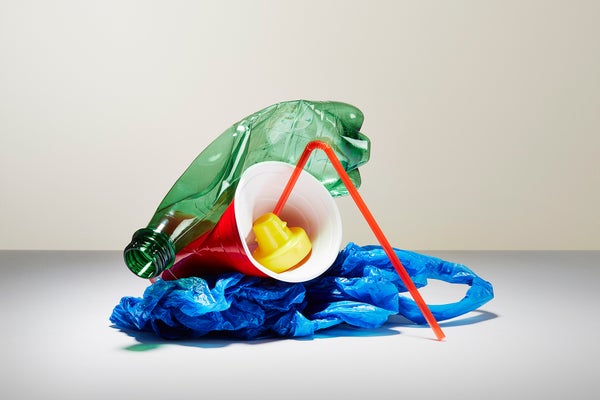First Comprehensive Plastics Database Tallies Staggering 16,000 Chemicals—And It’s Still Incomplete
A massive new dataset highlights more than 4,200 plastic chemicals linked to health and environmental risks. But scientists say there are still large gaps in the scientific understanding of plastic ingredients
Richard Drury/Getty Images
Plastics are inescapable. That soda bottle or disposable razor or even the coating on your mattress may expose you to hundreds of different chemicals, some of which scientists know very little about. Scientists are now a step closer to handling this complexity. On Thursday the PlastChem Project, a group of researchers in Norway and Switzerland, announced that it had identified more than 16,000 chemicals in plastic products in the first comprehensive database of all known plastic chemicals. The database, accompanied by a report, sorts the chemicals by their known environmental and health effects—a bank of information the PlastChem team hopes will inform governmental regulations, as well as international negotiations for a treaty to curb plastic use and production.
“It’s a dynamite report,” says Miriam Diamond, who studies chemical contaminants at the University of Toronto and was not involved in the research. The new database brings together information from scientific papers and seven datasets that detail different chemicals, says Martin Wagner, PlastChem’s project lead and a biologist who studies plastics at the Norwegian University of Science and Technology. It took his team about a year to compile and sort through all the data. A 2023 report from the United Nations Environment Program had previously estimated there are more than 13,000 chemicals associated with plastics. The new database expands this to a degree that shocks even scientists who study these issues. “Sixteen thousand chemicals—oh, my God,” Diamond says.
In addition to the sheer volume of chemicals, “the striking thing…
Read the full article here







